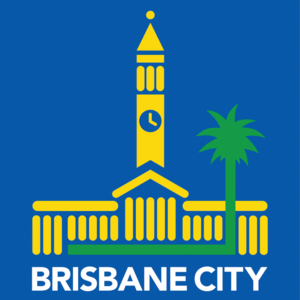The 2032 Olympics is coming to Queensland!
Cr Fiona Cunningham, Mayor Karen Williams & I are excited about Brisbane hosting the 2032 Games
The final countdown is over, and the bids are in for the host of the 2032 Olympic and Paralympic Games, with our very own Brisbane coming out on top!
This exciting announcement was made in July as I stood alongside our future Olympians and Paralympians.
Representatives from all levels of government met together as we linked to Tokyo for the International Olympic Committee’s decision.
The erupt of applause over Brisbane’s victory will be felt right through Queensland as this monumental event is sure to bring new jobs, infrastructure and opportunities right to the Sunshine State’s doorstep.
Hosting the 2032 Olympic and Paralympic Games will deliver an estimated economic and social benefit of up to $8 billion for Queensland and a total of $17 billion for Australia.
The long journey to this point started 6 years ago when former Lord Mayor Graham Quirk got the ball rolling at the South East Queensland Council of Mayors in March 2015.
Our current Lord Mayor Adrian Schrinner has worked tirelessly with eager mayors from across South East Queensland into what some would call a golden opportunity.
Not only will this boost our economy, but with the Olympic’s worldwide audience, would boost global awareness of our city, region and state on a previously unprecedented scale.
Brisbane will have more than 4 billion sets of eyes eagerly watching as we host the 2032 Olympic Games.
Architectural rendering of proposed new Gabba Stadium
Is it worth it?
One of the great benefits of holding the Olympics in Brisbane is that many venues that are capable of holding Olympic events already exist.
This means that alot of the cost of the games won’t be spent erecting new venues that won’t be filled like in Athens and Rio de Janeiro.
A good case study that can relate closely to Brisbane is that of the 1984 Olympics in Los Angeles.
The 1976 Summer Olympics in Montreal has been noted by many for its construction delays and cost overruns to build new infrastructure such as a new stadium resulting in $1.5 billion of debt that stayed around like a bad hangover for nearly 40 years.
It caused many cities to rethink how they could afford to host the Olympics, and as a result there was only one city that bid for the 1984 Summer Olympics: Los Angeles.
Thanks to the vast amount of existing infrastructure like large swimming venues, stadiums and other track/field infrastructure, Los Angeles was able to keep its costs relatively low and finished the 1984 Olympics with a $215 million surplus.
The key was relying on their existing sporting venues and the broadcast revenue earned from selling the rights to television stations all around the globe.
Like L.A, Brisbane has plenty of existing sporting venues that are going to be utilised effectively in 2032 with little to no need to build new venues.
Our 2032 Olympic Games has all the hallmarks of success and I’m proud to have been part of the Quirk & Schrinner Councils that helped bring it to fruition.
The Anna Meares Velodrome - Credit: Sleeman Sports Complex
How this Affects Chandler
The Olympics in Brisbane will consist of 31 venues, of which 21 will be held in Brisbane with three in our very own Chandler Ward.
One of Chandler’s venues of pride and glory is the Sleeman Sports Complex, which will be used for diving, water polo, gymnastics and artistic swimming. The Anna Meares Velodrome, also a part of the complex, will host the track cycling and BMX racing.
A little further up the road, the Belmont Shooting Range will hold the world’s sharpest shooters as they take aim for gold.
This opens the opportunity for funding from the Federal & State Governments to improve these venues, which I'm sure will be greatly welcomed by our local clubs.
This is a great outcome for the Chandler Ward, as we have the opportunity to show the world what we have to offer.
Not only will it greatly support our local community centres and clubs, but the surrounding businesses will find new customers who are eager to experience Australia for themselves.
Plans for the now defunded Eastern Busway had a dedicated busway all the way to Capalaba.
So, what about the Eastern Transitway?
Despite all the excitement for the Games, I can’t help but wonder if the Eastern Transitway will hold up with the influx of travellers, let alone the probable closure of one lane along Old Cleveland Road during the Games for athletes. I don’t believe the transitway will be enough for the future.
The Eastern Transitway is a shell of its former self, with the State Government’s original promise of the Eastern Busway now forgotten.
For those that vaguely remember, the Eastern Busway was a proposed busway extending from the existing Buranda Station to Capalaba providing a designated separate lane for buses to deliver tens of thousands in a fast, reliable and affordable way.
However, this project was slowly defunded by the State Government and replaced with the poorer option: the Eastern Transitway. You can read more about my thoughts on this here.
With the 2032 Olympics now in full swing, my staff and I developed a map of where it would have gone (which you can find below).
The majority of it was to be built on Old Cleveland Rd , which had a dedicated lane for athletes in the Commonwealth Games in 2018.
We need to increase our transport options on the Eastern suburbs, and the Eastern Busway is how we can make that happen.




